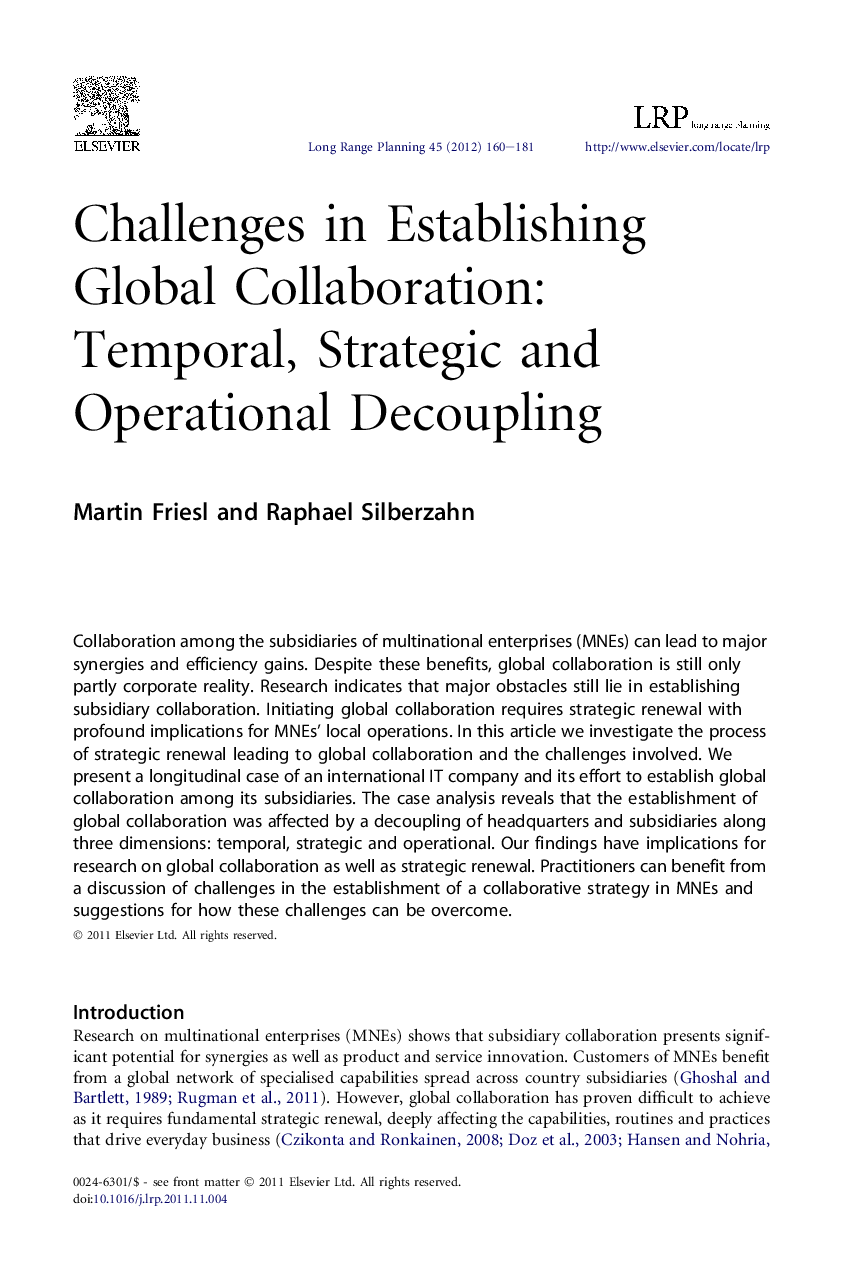| Article ID | Journal | Published Year | Pages | File Type |
|---|---|---|---|---|
| 1021485 | Long Range Planning | 2012 | 22 Pages |
Collaboration among the subsidiaries of multinational enterprises (MNEs) can lead to major synergies and efficiency gains. Despite these benefits, global collaboration is still only partly corporate reality. Research indicates that major obstacles still lie in establishing subsidiary collaboration. Initiating global collaboration requires strategic renewal with profound implications for MNEs’ local operations. In this article we investigate the process of strategic renewal leading to global collaboration and the challenges involved. We present a longitudinal case of an international IT company and its effort to establish global collaboration among its subsidiaries. The case analysis reveals that the establishment of global collaboration was affected by a decoupling of headquarters and subsidiaries along three dimensions: temporal, strategic and operational. Our findings have implications for research on global collaboration as well as strategic renewal. Practitioners can benefit from a discussion of challenges in the establishment of a collaborative strategy in MNEs and suggestions for how these challenges can be overcome.
